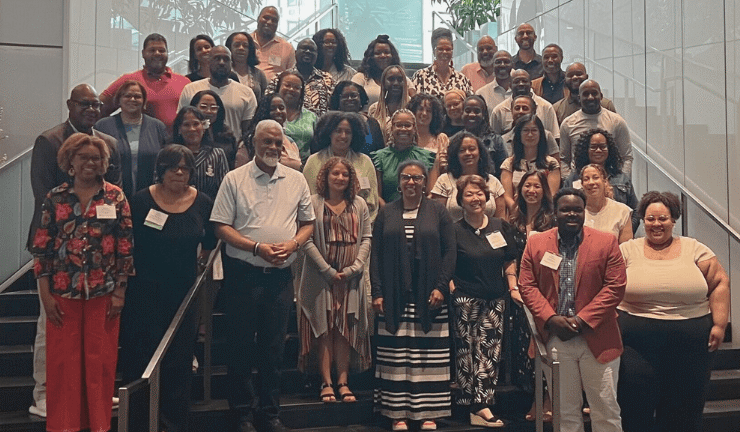Start with the Bread-and-Butter Elements of Headship

This is a piece is from CS&A’s summer focus on leadership transition. Check out the full series here.
I remember my first year of teaching quite clearly. Freshly out of college, I was going to change lives. Create learners and leaders. Spark interest. I got into teaching not so much for my subject matter as for connecting with children and impacting their love of learning, intellectualism, and desire to affect change. I got to mid-fall of my first year, and I hadn’t scratched the surface on any of those goals because my classroom was chaos. Shoddy lesson planning, no classroom management skills, and shaky overarching thematic work were rampant. I had made the classic error of focusing on the higher-level issues and ignoring the bread-and-butter matters.
Fast forward 15 years — happily, my bread-and-butter teaching skills improved! — and I was entering my first headship. I had similarly lofty aims: a strategic vision to implement; a culture of teaching and learning to grow further; and several major initiatives to pursue. As an internal hire, I had experienced tremendous mentoring from my predecessor,who had given me access to all manner of decision making for several years prior to my taking over as head, and I knew the community very well from my nine previous years at the school. And yet now, seven years later, as I enter my second year of my second headship, I look back and see that the challenges I faced as a first-year head are similar to those I experienced in as a first-year teacher.
For new heads, I believe it is essential to focus on the bread-and butter functions of headship in order to best set yourself — and the school — up for the essential high-order, strategic, and long-term roles of the position.
What are some of the bread-and-butter elements of the head’s role? A short, but hardly comprehensive list includes: constructing a strong, coherent, relevant head’s report to the board; managing and building a high-functioning leadership team; finding time to give meaningful attention to each constituency; and learning when not to solve a problem.
The latter point is particularly challenging for new heads. Given that many heads come from positions that require a fair amount of problem solving, they are competent, confident problem solvers. Yet many of the problems that come across heads’ desks are actually best solved by those for whom the problem and solution are an integral part of their own leadership and job ownership. Rather than stepping in to solve every problem that arises, it’s better for a new head to learn how to listen, reflect back, and empower others in the community to tackle problems related to their work, and, in doing so, play a central role in the school’s success.
These are but a few of the bread-and-butter functions of headship. In addition to encouraging new heads to attend to these foundational elements, I also want to offer several tips for best focusing on the appropriate priorities in the first year. Some are practices that I have employed in this second headship and others that I would recommend upon reflection.
- Listen and learn. There is no substitute for the time it takes to build relationships and understand the school’s culture, even — perhaps especially — when a head has been hired as a change agent. It is too common for new heads to move too quickly to action and to have that action undermined by a lack of trust or incomplete understanding of the situation. It is very important for the head and board to explicitly discuss the timing of initiatives and the need for this foundational work during the transitional time.
- With the board, develop and formalize an evaluation system for the head that includes clear, mutually agreed-upon goals for the first year. I would also encourage heads and boards to include “learning the school culture” as one of the early goals (see previous point).
- Schedule regular — weekly, if possible — meetings between the head and board leadership. The topics that arise in conversation at these meetings, connected to or separate from any agenda item, can be invaluable to the head in the early months. It helps the head to acquire a better understanding of the culture and history of the school and gain valuable context on any situation that arises in the community.
- A corollary to the preceding: Be open about your areas of comfort and experience as well as those that are newer to you. Heads have a lot of areas that require their oversight, input, and knowledge — curriculum, development, finance, admissions, and marketing, to name a few — and most first-time heads arrive only having relevant and deep experience in some of those areas. The more open a head can be about his or her experience in all areas of oversight, the likelier he or she will be able to form successful partnerships with those in charge of those areas — as well as with the trustee chairs of the relevant committees, where applicable.
- Consider a mentor — formal or otherwise. I encourage all new heads to find someone with expertise in leading a school to serve as your one-on-one mentor. It could be a head of another school who serves on your board, or a former head with whom you have worked, or a local retired head you know and trust, etc. This is the kind of mentor you can call anytime to ask anything. Just the questions a mentor asks you in order to understand a given situation will make a huge difference in your thinking about it. This recommendation is distinct from hiring an executive coach. A mistake I made in my first year was negotiating for an executive coach. What I really needed was a mentor to discuss the various decisions/topics that arose that year. For me, an executive coach relationship would have been much more effective a year or two later when I had the confidence in the bread-and-butter aspects of headship and when I could more effectively focus on the impact of my leadership style on others.
- Give yourself a break. There is a lot to navigate in the first year, and there will be plenty of quicksand that is impossible to see. Mistakes are inevitable; give yourself the space to make them and to give them only the psychological attention they need — and not more.
- Attend the NAIS Institute for New Heads, if possible. Headship is indeed lonely, and the relationships you will build with other school leaders are invaluable. There are precious few people who know what you are experiencing in your first year, and your cohort at the institute is one great resource. Plus, the information and context offered at the institute are substantive, valuable, and timely.
Though not a bread-and-butter aspect of headship nor a long-term visionary one, managing crises is an essential part of headship. It is likely a new head will experience some in the first year — and many after that. In my first year of headship, I had to navigate a very tricky and far-reaching student-conduct issue and a hurricane that caused school to be closed for an entire week. In my first year at my current school, a former colleague who I did not know but who was beloved by the school community passed tragically and suddenly in the fall. A very public and tragic family situation also rocked the community later in the year. There is nothing that can specifically prepare a head for these situations, but good overall planning and procedures, strong partnerships with the board and leadership team, high emotional intelligence, and a calm, focused mind are important to successfully navigating these difficult situations. Focusing on the bread-and-butter items in the first year will give new heads the best chance being in the right frame of mind to allow them to access their emotional intelligence fully in those moments.
While the first year of teaching is hard, teaching is incredibly joyful and rewarding. The same is true of headship. To know that several hundred students, along with teachers and families, depend on you to impact a culture of teaching, learning, and character, and to envision a future better than the present and to steer the community in that direction is joyful, humbling, challenging, and invigorating. At the same time, to use totally different skills and parts of your brain several times a day, every day, and to get to sit back and watch students and teachers thrive is tremendously rewarding. All of this gets even better when the foundation of the first years of headship are strong and thorough. Such an experience builds a platform from which the head and the school can soar.
Aaron Cooper is the head of school of New Canaan Country School in Connecticut. He can be reached at acooper@countryschool.net.








